When it comes to prepping food for survival after the collapse, honey is one of the must-haves on the list because it has an indefinite shelf-life. But why stop at just stocking dozens of jars of honey when you can produce your own? After all, jars of honey are heavy and bulky and take up a lot of room that you could dedicate to other types of preps. When you keep bees to produce your own honey, you will have the chance to make honey for your own use and have some extra with which to barter. Plus you’ll never have to go without!
Why Produce Your Own Honey
We talked about how keeping a beehive will mean having a continuous supply of honey without having to store away dozens of jars of the stuff, but there are so many more incredible benefits to keeping a beehive! Let’s take a look.
Health Benefits
While honey is sweet, it is also healthy. That means you can have your sweet treat and still get all the amazing health benefits honey can provide. The health benefits of honey include:
- It always has trace amounts of pollen, which means locally harvested honey can provide allergy sufferers with enough pollen to help immunize the body against that pollen. This will mean less suffering during allergy season.
- Honey is an anti-bacterial, anti-microbial substance, making it a great medicinal to have on-hand. It can be used to treat wounds and burns, is good for the skin, and can be used in tea to help fight off a cold or flu.
- There are other substances you can get from the bees when you are a beekeeper. These include pollen, propolis, and royal jelly. Let’s talk about each of these.
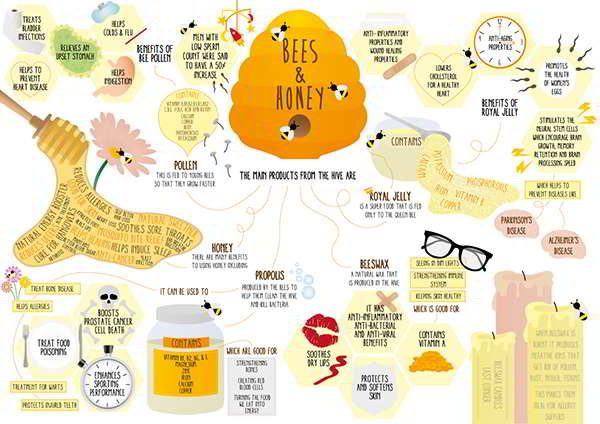
Bee pollen is an incredible and complete food. It is full of nutrients that include fatty acids, amino acids, enzymes, polyphenols, chelated minerals, trace elements, and loads of vitamins. If you keep beehives, then the pollen you get from the hives will help you and your family remain properly nourished, even through hard times.
Propolis is a substance that the bees make from the pitch or resin found in pine trees and other similar trees mixed with pollen, saliva, and beeswax. They use this substance to seal their hive and protect it from the wind and the rain. This substance also provides incredible health benefits to humans. It has been shown to have a profound effect in fighting cancer, plus it is good to treat wounds and abscesses and to fight infection.
Royal jelly is what the bees make to feed the most important bee in their hive – the queen. This means royal jelly is the ultimate in nutrition. It is also a very strong anti-bacterial substance, which is very important when fighting infection.
Pollination
Now, I know you are keeping a survival garden, right? And that means you need pollinators. Sure, there will be a few bees and other potential pollinators around, but there is nothing like having your own source of them. Having your own private source of pollinators will actually increase your yield of fruits and vegetables, which will help feed your family post-collapse. Having pollinators on your property makes such a huge difference because the bee population as a whole is declining. This brings us to another benefit of beekeeping…
Related: Mosquito-Repelling Weeds That you can Plant in your Backyard
Help Rebuild the Bee Population
Honey bee populations in many regions around North America and the world are rapidly declining, primarily due to the use of pesticides. What bees remain are also having a difficult time with disease and parasites. We are on the brink of the extinction of bees, which will have devastating effects on global food production. By keeping your own bees, you are not only helping yourself, but the whole world, because you will be helping to rebuild the failing bee population.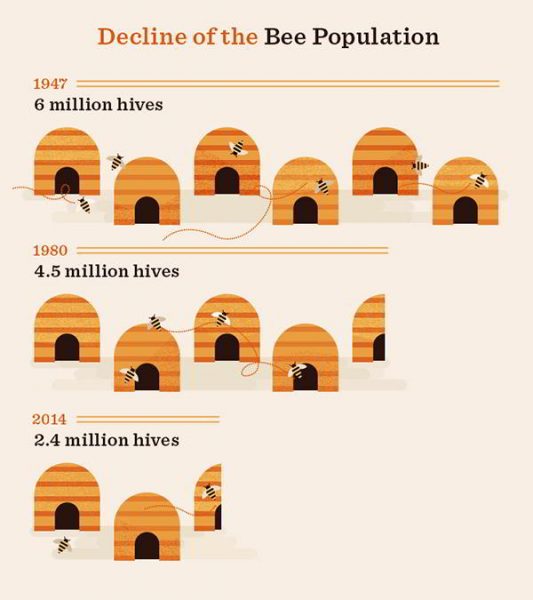
How to Start a Hive
Starting a beehive is something that is relatively easy, but can be touch and go especially in the first year. The first thing I would suggest to you is that you read up on beekeeping extensively and check the regulations in the city/state in which you live. This is not something to take lightly, so it is important to be properly prepared. There is very likely a beekeeping association in your area that can be a great source of information and help.
When it comes to starting your hive, the best time of year to do so is in the spring, so you will need to have all your equipment onsite and your hives set up by then. The spring is when the bees are all waking up from their winter slumber and are at their busiest, which means they will be able to build a strong hive.
Let’s first talk about getting all the proper equipment and setting up the hives. Then we will talk about getting the bees.
Related: You Pass by This Plant Everyday Without Knowing How to Use It When SHTF
Equipment
There is some basic equipment you will need for beekeeping. Here is a list of what you will need:
 Smoker
Smoker- Protective clothing, including a veil and full bee suit
- Bee brush
- Hive tool
- Spray bottle filled with syrup (syrup is 1 part sugar and 2 parts water)
- Top feeder that provides additional food for the bees in the form of syrup (usually a 1-gallon jar with small holes in the lid that is inverted and placed into a hole in the cover of the hive)
- A queen catcher to more gently catch the queen
- Queen muff that will keep the queen from flying away
- Bottom board on which to set the hive
- Extractor (expensive, but you might be able to borrow or rent one in the beginning)
- The hive
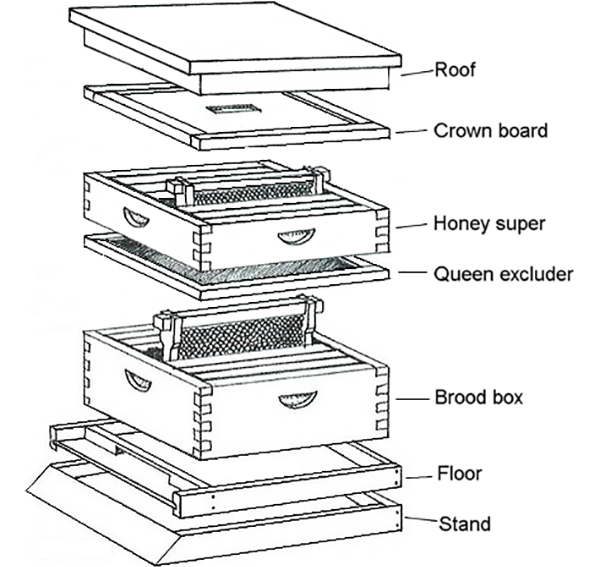 The hive is the most important part to get right, so let’s talk about it in more detail.
The hive is the most important part to get right, so let’s talk about it in more detail.
The Hives
Don’t skimp on your hives. If you are good at building things, you can certainly build your hives. You can also buy used hives, but be sure they are in good shape. The safest bet is to buy new hives. When you get your hives, you want to place them in the in a sunny location. Bees don’t like the shade. You also want to position the hive with the following in mind:
- Place it somewhere dry.
- Position the entrance to the hive facing a wall so they are required to fly up when they emerge.
- Place them near flowering plants. Ideally, this is your survival garden, with all your fruits, vegetables, herbs, and medicinal plants.
- Ensure there is a natural, standing source of water nearby that has rocks or other things for the bees to stand on while they drink.
Related: Preserving Potatoes Year Round; A Solid Choice for Preppers
Getting the Bees
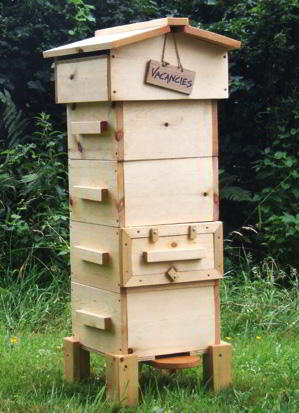 When you are first starting out, you will lack experience, so capturing a swarm isn’t the best option. For this reason, it is best to buy your bees in what is called a nuc (short for nucleus). A nuc contains a queen and an adequate number of worker bees and brood to start a hive. It is best to start with at least two nucs, because if you have problems and lose one of them, you will still have the other. Besides, you certainly can’t have too many!
When you are first starting out, you will lack experience, so capturing a swarm isn’t the best option. For this reason, it is best to buy your bees in what is called a nuc (short for nucleus). A nuc contains a queen and an adequate number of worker bees and brood to start a hive. It is best to start with at least two nucs, because if you have problems and lose one of them, you will still have the other. Besides, you certainly can’t have too many!
You can actually order your nucs online and have them delivered to your home. Once the nucs arrive, all you have to do is put them into the hives and you are all set. They will generally come with five frames in a screened box and you can request to have the queen marked for a slightly higher cost (but well worth it).
Ideally, you will drop your nucs into your hives and that will be the end of it, but as mentioned above, there are diseases and parasites that can harm your bee colonies. Some examples of bee diseases include:
- American foulbrood (AFB): A bacterial disease that infects larvae and pupae.
- European foulbrood (EFB): A bacterial disease that infects larvae.
- Nosema disease: Similar to dysentery, this is a protozoan disease that infects the intestinal tract of adult bees.
- Chalkbrood disease: A fungal disease the infects larvae.
- Sacbrood disease: A viral and is essentially like the common cold for bees.
- Stonebrood disease: A fungal disease that infects larvae and pupae.
You should completely familiarize yourself with all possible bee diseases and parasites when starting your hives. Click here to access a great resource.
Related: How to Adjust the pH in Soil and Water for Abundant Harvests
Harvesting the Honey
The best time to harvest honey is in the fall, although you can access it any time of year. When it is time to harvest the honey follow these steps:
- Coming in from behind the hive, use the smoker in the entrance to the hive.
- Open the hive and smoke the upper area of the hive, which will drive the bees down into the lower part of the hive.
- Take out the inner cover, which might requiring a prying tool because it will likely be sealed with propolis.
- Remove the bees from the frames you are taking out by using your bee brush to gently wipe them off the frame.
- When the frame is free of bees, you can pull it out and put it in an empty super (a large hive box).
- When you are ready to extract the honey, scrape the wax cover off the cells on both sides of the frame.
- Put the frames into the extractor and allow it to rotate (or manually rotate it if it is hand-operated) to extract the honey, which will pass through a spigot in the bottom of the drum.
- As the honey passes through the spigot, allow it to run through a few layers of cheesecloth to strain it.
- Put your honey into clean, sterilized jars.
Additional Tips
The following are extra tips that you really need to know prior to starting your beehive.
- If you are starting urban beekeeping, it doesn’t hurt to talk to your neighbors about it first. You can always offer them some of the honey if they seem to have a problem with it, but most people will be fine with it, provided no one in their household has a serious bee allergy.
- When urban beekeeping, make sure you have a high fence (ideally 8 feet), which will force the bees to fly in and out from above and avoid coming into contact with the people around your property.
- Since your nucs will come in the mail, it doesn’t hurt to let the local post office know about the delivery.
- Check on your bees regularly to ensure they are doing well.
- You want to avoid green honey, which is honey in cells that are uncapped. This honey won’t taste as good and will be more unpleasant consistency. It has not been fully prepared by the bees, so it contains a lot of moisture and is not yet safe to eat because of high yeast content. If you pull out a frame in which a large majority of the combs are uncapped, then put it back because it isn’t ready.
- The color of your honey will depend on where you live, the types of flowers visited by the bees, the amount of rainfall, soil conditions, and time of harvest. The later in the year the honey is harvested, the darker it will be.
As you can see, keeping bees is relatively easy, once you get going. Plus, the benefits are tremendous. You will have a source of nutritious, medicinal food that will carry your family through hard times, whether this is a few years of economic depression or the complete collapse of society as we know it. Plus, beekeeping is just plain fun!
You may also like:
 79 Edible Flowers in North America (with Pictures)
79 Edible Flowers in North America (with Pictures)
This Bug Will Kill Most of the Americans during the Next Crisis (Video)
The Battery That Can Power Your Home Completely Off The Grid
Gardening For The Future – Hay and Straw Bale Gardening
How to Keep Grains Edible and Fresh for Over 40 Years With Nitrogen

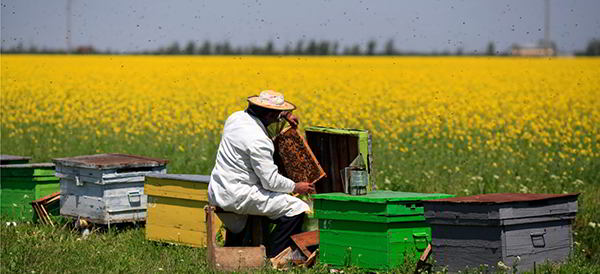
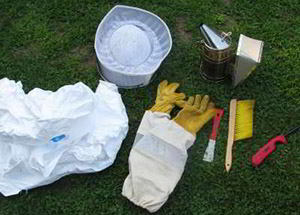 Smoker
Smoker









Attend Beeschool, it will bee worth it!
Beekeeping is not something to be undertaken lightly. My brother-in-law has hives and diligence and research are needed, and there are disappointments as well. He has a neighbor down the road a ways and his neighbor said that since he started raising bees his crops are more bountiful than ever.
Bee brushes really tick off bees! Watch “the fat bee man” and ” 628 dirt rooster” on you tube. They do a video for just about any step in be keeping. It’s fairly simple as long as they have food water and the right space to work. Just like any other pet they are work but they can usually fend for themselves once established into a hive. But if you don’t do a little work when they need it they will let you know by leaving.
I bought a hove 1 year ago and theyseem to be doing well but I worry they wont have enough room how can I tell I have 3 boxes JPK
I have a brother who has been in the honeybee business for most of his adult life. He was up to 500 hives, then a buyer bought him out. This buyer didn’t properly care for the bees and lost them withing 2 years. My brother will not build up to more than 50 hives again, and he collects at least 3 crops per year. Wild Flower, clover and Sour wood honeys.
I had a thriving hive and noticed one day that they looked weird. One day almost no bees on the front of the hive and the next day many bees. We spotted a very large frog, a Cane frog sitting on the ledge and eating my bees! We caught him and relocated him miles down the road, Long story short we caught 2 more humongous frogs, moved them and now seem to have no bees. Any body else have frog problems with their bees?
Hi dgl,Three years later I can definitely say my heating costs with electric space heating are less than they would have been using natural gas with my old furnace. My operating costs would likely be even lower if I installed a high efficiency gas furnace, but it would be several years for the capital investment to pay back (while the capital investment on portable electric space heating paid back in the first year). If/when I choose to make a bigger capital investment, it will more likely be in a ground source heat pump and radiant floor heating (fortunately the layout of my home with a 3ft crawlspace under the main floor makes this relatively easy to install), but in the meantime I will stick with electric space heating and continuing to improve insulation and sealing.
Great write-up, I¡¦m normal visitor of one¡¦s blog, maintain up the nice operate, and It’s going to be a regular visitor for a long time.
how do you care for bbe in cold 7degrees
My men to talks about being a bee keeper and a bee haver. You mention a lot of the end results of beekeeping, but you don’t talk about the maintenance that goes into keeping bees.
You need to inspect your hives regularly, treat for mites, check brood patterns, watch for invaders and robbing, water them. Although it is less work than having other livestock, beekeeping is not a set it and forget it operation.
If you do get bees, please research their care and maintenance. It will benefit both you and them.
trying to complete my library with aticle s i’ve missed